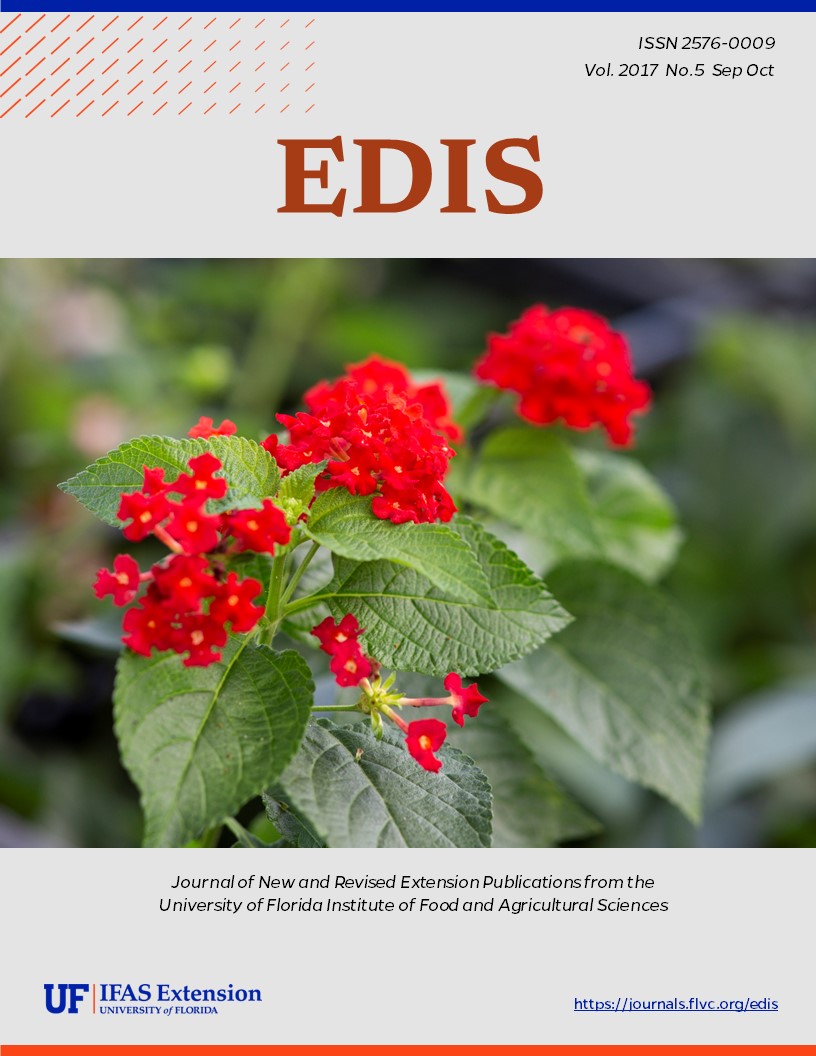Abstract
Microirrigation involves the slow, controlled application of water to a crop using low pressures. Therefore precise and accurate placement of water to the crop can be achieved through proper design, installation, and management. In sandy soil vegetable production systems, tubing is placed along the plant row either on or slightly below the soil surface. In mulched bed production systems, the tubing is used to maintain desirable moisture conditions within all or most of the bed.
The intent of this publication is to provide the user with design and management information regarding the application rates and depths associated with microirrigation tubing and its use in mulched bed production systems.

This work is licensed under a Creative Commons Attribution-NonCommercial-NoDerivatives 4.0 International License.
Copyright (c) 2017 UF/IFAS

